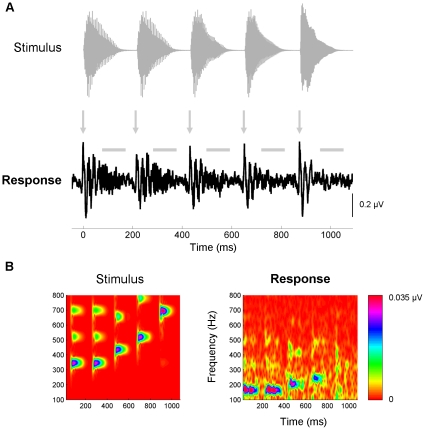Figure 2. Description of the response.
(A) Time domain. Percussive instruments, like the piano, have sharp attacks and rapid decays. As seen here, these aspects of the stimulus (top, gray) are preserved in the response (bottom, black). This is evidenced by large response peaks coinciding with the onset of each piano note (arrows). Horizontal bars identify the frequency-following response (FFR), the neural synchronization to the periodic aspects of each note. (B) Frequency domain. The stimulus (left) and response (right) spectrograms. Phase-locking to the fundamental (F0) and its second harmonic (H2) is observed in the FFR to each note. As predicted from the low-pass nature of brainstem phase-locking, the response to the F0 (165, 165, 208, 247, 330 Hz, respectively) is stronger than the response to resolved harmonics of the stimulus (H2 = 330, 330, 416, 494, 660 Hz, respectively). A representative subject is plotted.

